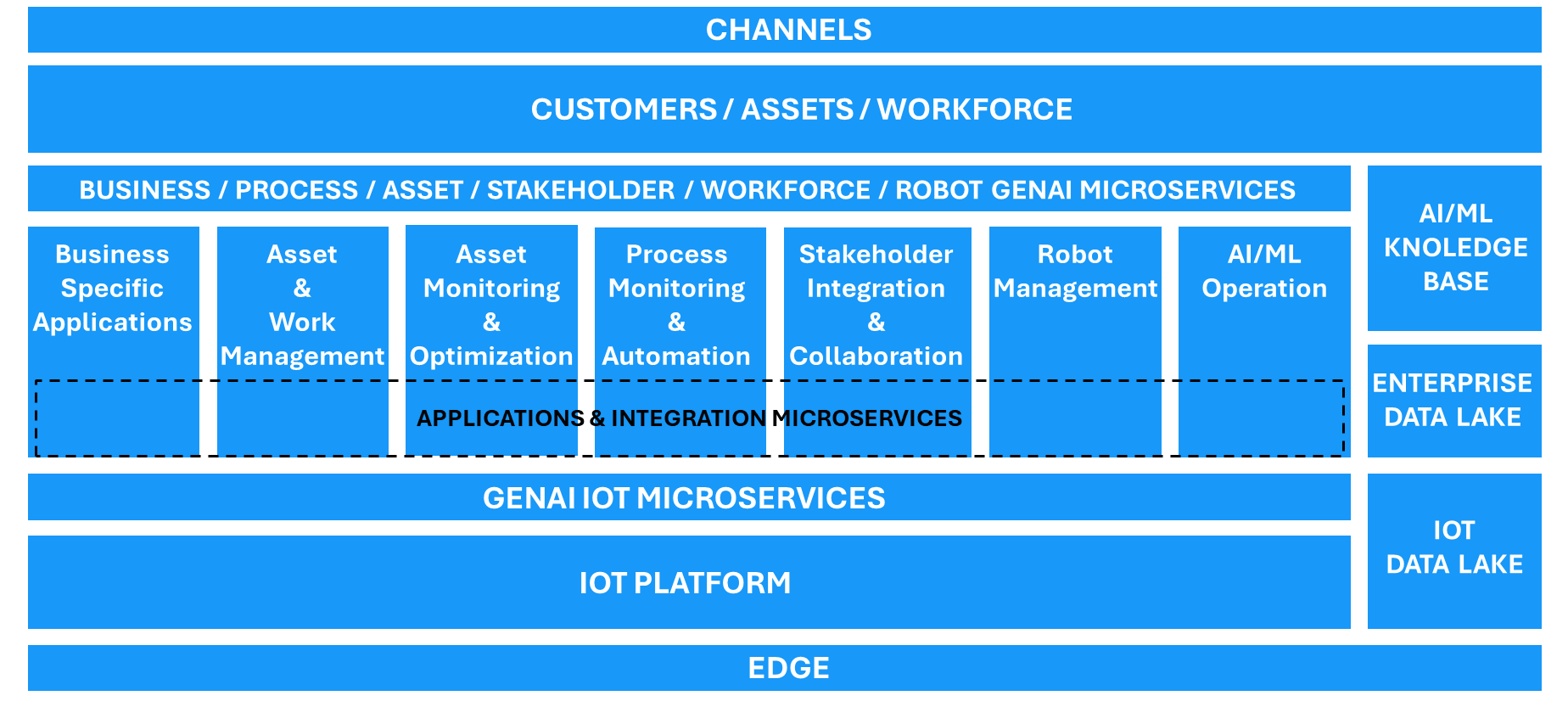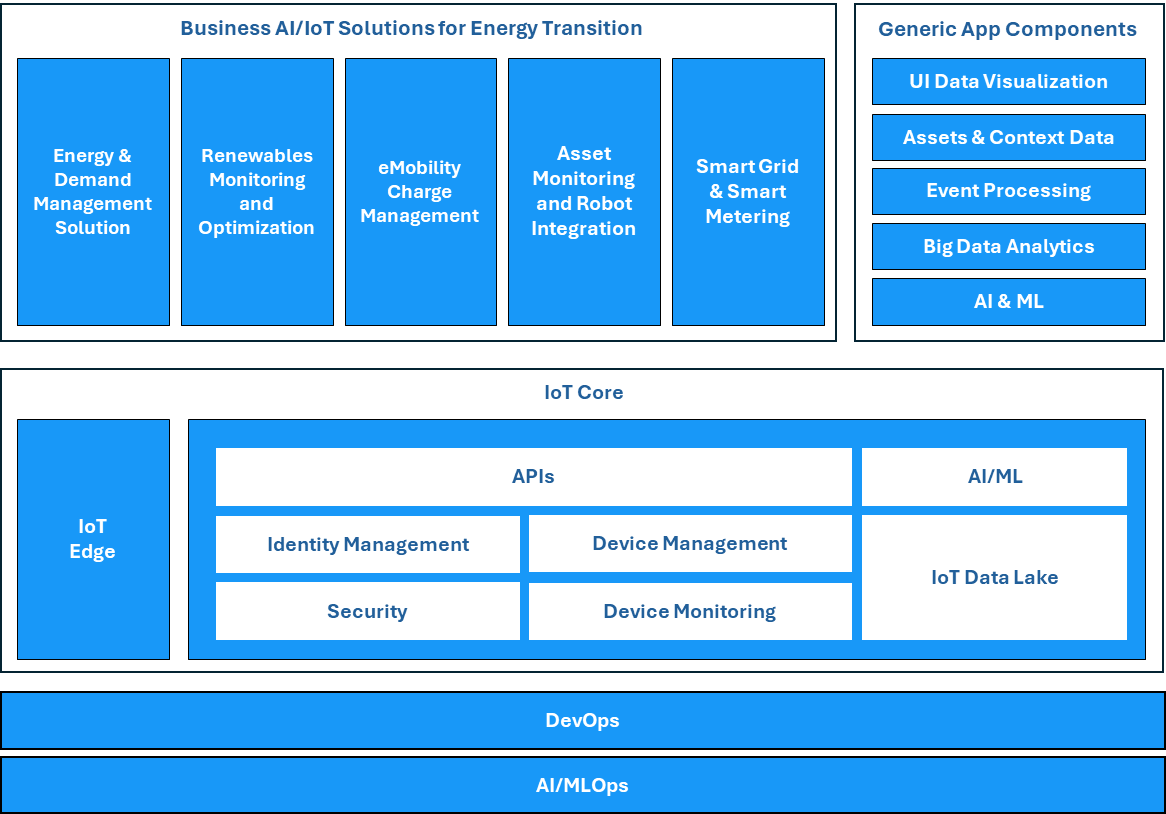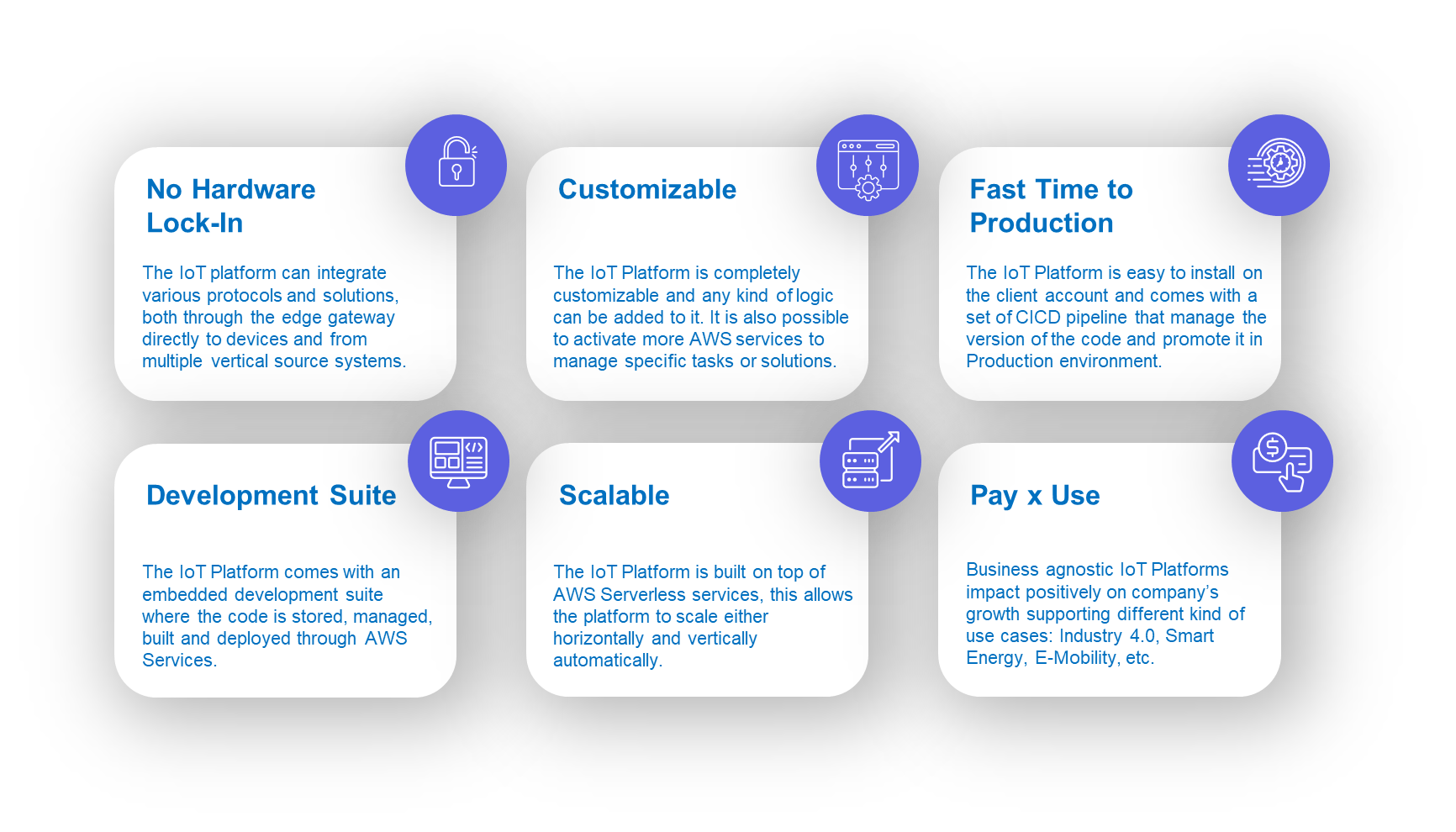,allowExpansion)
An all-in-one, multi-purpose IoT platform that is open, flexible, scalable, customizable, and applicable across various contexts and sectors
The Energy & Utilities sector, as well as other energy-intensive industrial sectors such as Manufacturing, Automotive, Transportation, and Infrastructure, is adapting its operational and business models to accelerate the decarbonization process.
Enterprise information system architectures are evolving, introducing components to create new mission-critical applications that enable new operational models and services.
New opportunities have already pushed almost all operators in the energy sector to innovate their architectures and start projects to introduce these new components alongside their core information systems. Some utilities have chosen to create flexible and open architectures that allow for dynamic evolution without limitations imposed by the rigidity of their components.
In the same direction, some operators in the Oil & Gas and Automotive sectors are focusing their strategies on renewable generation and the electrification of consumption and mobility. The control of consumption, the exploitation of distributed energy resources, and the opportunities to participate in flexibility events are progressively pushing even large operators in the manufacturing sector towards adopting similar architectures.

The profound changes and transformations in the energy world represent a push for companies in the Energy & Utilities sector to review their current internal operational processes and services for their customers. More importantly, it is a concrete opportunity for many operators to rethink their market positioning and seize the opportunities and challenges that the energy transition offers and requires.
It is therefore essential to evolve current systems to ensure real-time interaction with industrial plants, energy resources, and energy distribution networks. Equally crucial is the introduction of new application components to control energy flows, the dynamic operation of their plants, and the execution of optimization strategies, as well as the monitoring of assets.
To support companies in evolving their Enterprise Architectures, Sense Reply, in collaboration with the AWS Global IoT Team, has designed, developed, and implemented a technologically innovative portfolio of solutions based on AWS serverless components to facilitate the adoption of end-to-end IoT with a "ready-to-use" platform and a set of AI-powered business applications.
RIPA – Reply IoT Platform Accelerator currently supports many clients in launching new IoT & AI powered business solutions, facilitating their energy transition.
The architecture of RIPA consists of micro-services that make it open, flexible, and scalable: it can indeed be evolved by our clients without any limitations.

RIPA allows to take advantage of multiple benefits as it is a synthesis between a "SW package implementation" approach (which brings speed and low initial investment costs) and a "custom development" approach (which allows maximum customization and flexibility and avoids any lock-in).

Ensures energy monitoring of complex industrial plants or buildings
Allows the aggregation of large DERs and to define and execute complex strategies to participate to flex and DR events
Includes integration with network operators' systems for energy flexibility event management
Integrates complex industrial plants and field devices (e.g., meters)
Implements functionalities for end-user management (e.g., billing)
Enables the development of solutions for the monitoring and optimization of electricity (LV/MV/HV), gas, and water transport and distribution networks
Allows better control of networks through asset management and digital twin functionalities
Facilitates the integration of heterogeneous smart meters thanks to the support of industrial communication protocols
Provides AI, GENAI tools for business process automation, load forecasting, and loss detection (electricity, gas, and water)
Enables edge computing functionalities to increase the resilience of information systems and reduce latency times
Allows secure and reliable data acquisition, normalization, and centralization of a large portfolio of renewable plants, integrating existing plant SCADA or integrating directly with plant components (inverters, meters, sensors, substations, etc.), ensuring data consistency
Provides standard PV and Wind plants monitoring features and control room
Allows the development of advanced analytics algorithms (e.g., power forecasting, anomaly detection) and natural language data analysis
Provides an end-to-end solution for fleet management and O&M process management (e.g., mission planning, reporting, etc.), customizable and integrable with third-party drones and robots
Allows direct integration of drones for real-time data exchange and real-time on-edge analytics (video analysis, anomaly detection, LIDARS, etc.)-
Allows integration with any type of drones and robots, whether they are proprietary or commercial, and any type of analysis model
Integrates real-time asset sensors and data through IoT in the same Data Lake
Provides a fully functional CPMS already integrable via OCPI with other operators and eRoaming networks (e.g., Hubject), reducing complexities and management costs of various types of electric vehicle charging stations
Supports the lifecycle of Charging Units, manages end-to-end charging processes, and monitors stations via the OCPP protocol
Meets integration and interoperability requirements for managing both public and private charging infrastructures
Integrates with the Reply IoT platform Accelerator (RIPA), with renewable energy management solutions, energy management for complex business models such as dynamic pricing, generation and storage, smart charging, and its integration with electric grids through V1G (unidirectional smart charging) and V2G (vehicle-to-grid) approaches